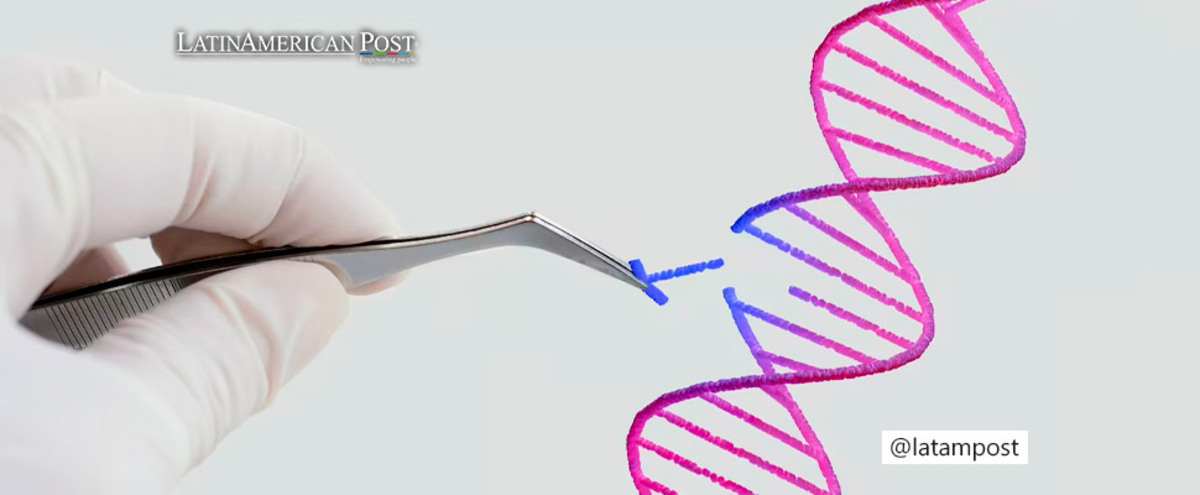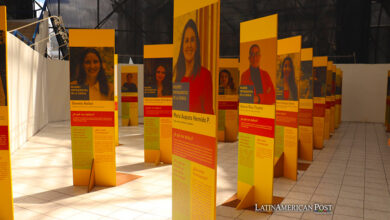Gene Editing, the Therapy that Promises to Write a New Chapter in the History of Genetics
The remission of a deadly type of leukemia in two patients in the United Kingdom, after subjecting them to the technique known as gene editing, undoubtedly opens a light of hope for the effective treatment of multiple disorders by genetics.

Photo: Adobe Stock
LatinAmerican Post | Julián Andrés Pastrana Cuéllar
Listen to this article
Leer en español: Edición genética, la terapia que promete escribir un nuevo capítulo en la historia de la ciencia
Last December, within the framework of the annual congress of the American Society of Hematology, news was announced that undoubtedly represents a milestone in the history of science and medicine with genetics. This was the case of Alyssa, a 13-year-old British teenager who was cured of aggressive cancer thanks to the application of an innovative technique known as gene editing.
According to the Spanish media El País, in addition to Alyssa, two other young people aged 15 and 13 also received the therapy to treat T-type acute lymphoblastic leukemia that was not responding to bone marrow transplantation or chemotherapy. Although the 13-year-old boy died due to a fungal infection, Alyssa and the 15-year-old boy did manage to overcome this deadly disease thanks to this revolutionary medical treatment.
Background to gene editing
For the Iberian newspaper, the genesis of gene editing dates back to 2003, when the Spanish researcher Francis Mojica managed to determine that certain microbes had the ability to eradicate invading viruses, using a kind of molecular scissors with which they manipulated their genetic material. Eleven years later, the American chemist Jennifer Doudna and the French biochemist Emmanuelle Charpentier won the Nobel Prize for discovering that these microbial scissors (baptized CRISPR) would be capable of modifying DNA.
The American chemist David Liu is credited with the invention, in 2019, of a second generation of CRISPR called base editors, the above for its ability to delete specific letters from DNA to replace them with others. These grassroots publishers were key to the recovery of the two British teenagers.
Regarding CRISPR, Columbia University scientist Samuel H. Sternberg, in an article published on the OpenMind BBVA portal, explains that this technology managed to overcome the great obstacle of a human genome made up of 3,200 million letters of DNA. For this reason, today experts, through CRISPR, can "correct genetic mutations, eliminate pathogenic DNA sequences, insert therapeutic genes, activate or deactivate genes, and more."
We recommend you read: Elon Musk's Neuralink Gets Green Light to Test Human Brain Implants
What does this innovative technique consist of and what does it promise?
Sources such as the specialized portal MedlinePlus describe genetic editing, also known as genome editing, as a set of technologies that remove, add, or alter genetic material in some parts of the genome. One approach to this technique is called CRISPR-Cas9 and stands out for its efficiency and lower cost compared to other similar methods.
CRISP-Cas9 is inspired by the ability of bacteria to destroy the viruses that infect them. This is a complex process that begins when bacteria take bits of DNA from invading viruses and then insert them into their own DNA. From this action arise segments called CRISPR arrays that allow them to recognize specific regions of the DNA of the viruses each time they attack them again. It is a complex process that culminates when the bacteria resort to the Cas9 enzyme to cut the DNA and thus deactivate the virus.
This technique is currently being studied to eventually treat multiple diseases, including single-gene diseases such as hemophilia, sickle cell disease, and cystic fibrosis. According to Sternberg, there are more than 10,000 types of these monogenic diseases that affect 1 in 200 births. Its use could also be applicable to treat and prevent cancer, HIV, and heart and mental disorders. In fact, Sternberg notes that by applying the CRISP editor to human cells, it has been possible to eliminate mutations that cause "sickle cell anemia, beta-thalassemia, Duchenne muscular dystrophy, blindness, and many other genetic disorders." For this reason, the news of the cure of leukemia in the two British patients opens a light of hope regarding the enormous potential of this therapy.
Ethical debates
In the case of Alyssa and the other survivor, a medical team from University College London, led by Waseem Qasim, turned to CAR-T-therapy. The latter consists of introducing patients with their own white blood cells that have undergone genetic redesign to make their ability to neutralize cancer cells more powerful. However, in this specific case it was necessary to use white blood cells from donors, which, thanks to the intervention of the base editors, saw their ability to fight cancer that impacted minors multiplied.
As encouraging as this news is, the use of gene editing also raises an ethical debate. Samuel H. Sternberg points to the fact that while many researchers are focused on using CRISPR to treat people with disease, another group of scientists is exploring the possibilities of repairing DNA mutations in human embryos conceived in a laboratory. Their goal is to "create heritable gene edits that can be copied in all cells of the developing human and passed on to all future offspring." And although this expert labels as alarmists those who predict the creation in the future of babies with superhuman beauty, intelligence or strength, since these traits, according to him, are not completely attributable to genetics, the ethical conflict of use of this technology. For this reason, genome editing in germ cells and embryos is now prohibited in the United States and other countries.




